The German city of Cologne has been branded a “no-go zone” for women by the 18-year-old victim of sex attack carried out by up to 30 men.
The young woman, who was identified only by the name Michelle, told Germany’s N-TV news network that the attackers surrounded her and a group of 11 female friends during last week’s New Year’s Eve celebrations, repeatedly groped them and then stole their belongings.
Police have not yet made any arrests after 90 criminal complaints were filed, including one allegation of rape. It is believed that around 1,000 men, who split into gangs, were involved in the attacks at the city’s train station.
Describing her harrowing ordeal, Michelle was quoted by MailOnline as saying: “At around 11pm we were at the main train station and wanted to travel on to see the fireworks and that was when we first noticed all these men standing around.
“We managed to go into the cathedral and wanted to go past the Museum Ludwig to join everyone and watch the fireworks by the river, but suddenly we were surrounded by a group of between 20 and 30 men,” she reportedly added.
Michelle told N-TV that her terrified friends linked arms for safety, but their attackers were “full of anger” and tried pulling them off in separate directions. When that failed the men began groping the young women and stealing items from their pockets, including mobile phones.
Undeterred by the assault, the young women continued with their evening but later ran into a different group of men firing fireworks at one another near Cologne station. In the crush to get on to the platform Michelle lost her friends and subsequently realised she’d missed her last train. Alone, she then had to make her way back through the crowd of men before walking the three miles home.
The city’s mayor Henriette Rekeryor provoked outrage and accusations of victim-blaming for her comments suggesting women need to be ‘better prepared’ for such incidents.She offered suggestions on how women should behave to avoid similar attacks, including remaining ‘within your own group, and asking bystanders to intervene or to help as a witness’.
It is believed that at least 118 German women have come forward to report being sexually assaulted on New Year’s Eve alone. Incidents were recorded in Hamburg and Stuttgart as well as Cologne.
Victims were largely women in their teens or early 20s with many eyewitnesses alleging the sex attackers were of Middle Eastern or North African appearance. This has fuelled tensions in Germany where many locals blame the assaults on the large number of refugees and migrants to have arrived in the country over the past 12 months.
When asked if schools refuse to abide by the government’s order, Kejriwal said, “The government can do anything; schools can be derecognised or the government can take over such schools.”
Delivering a master stroke that will provide big relief to the parents seeking admission for their kids in private schools and will have long-term bearing on Delhi’s education system, the Aam Aadmi Party (AAP) Government on Wednesday ordered scrapping of all admission quotas from private schools, except 25 percent reservation for children belonging to the Extremely Weaker Section (EWS).
Chief Minister Arvind Kejriwal said, “There will be only 25 percent quota for EWS students, while the schools will have to be made available 75 percent of seats to general public.” Denouncing private schools ‘unreasonable admission criteria’, Kejriwal said, “We have scrapped 62 criteria of admission process in private schools that were unreasonable and discriminatory.” “The Delhi High Court has directed that the criteria and admission process has to be fair transparent and reasonable,” said Kejriwal.
“Abiding by the HC’s direction, the Delhi Government in December had asked all private schools to make their own criteria for making the admission process transparent, and upload those criteria on your website, and also upload on your website that which child has got how many marks under which criteria”, he said.
“However, when we received their criteria for admission and we complied those criteria, we found 62 of them unreasonable and discriminatory, and thus, order the scrapping of those criteria,”he added.
The Chief Minister said it had been done in order to make the admission process in private schools transparent and people-friendly.
When asked if schools refuse to abide by the government’s order, he said, “The government can do anything; schools can be derecognised or the government can take over such schools.”
The Maharashtra government is examining the odd-even car plan presently underway in Delhi and may emulate the formula in Mumbai if it proves to be a success. Finance Minister Sudhir Mungantiwar was responding to NCP’s demand for a similar formula in Mumbai.
“We need to implement the even-odd car number formula on roads of Mumbai as is being done in Delhi to make Mumbai pollution free. If this plan is successfully implemented, plying of as many as 50 per cent vehicles per day on the roads will be reduced. This will also help in reducing the city’s carbon footprint as 26 per cent of green house gas emissions are caused by using petroleum products. In addition to that the city is also seeing an increase in number of tankers, trucks, buses each day,” NCP Mumbai Unit President Sachin Ahir said. In response, Mungantiwar said the results of Delhi’s experiment will take time to show and if successful, the state government will consider implementing it in Mumbai as well. “We will do whatever it can and take in all ideas to reduce traffic and pollution levels in Mumbai. Delhi has started with this experiment. The results will take time to show. It has just been 4 days now and we can’t judge the effects in four days. We will later know how beneficial the scheme was for Delhi,” Mungantiwar said. “If we feel the experiment is successful, it can be applied anywhere in the country. Accepting good things is the specialty of 21st century. We should be open to new ideas while remembering that we do not get overboard before knowing the results of new ideas,” he added. He further said that the government is open to accepting new ideas from other state governments if it can prove beneficial for Maharashtra. “We are examining the scheme, if it is successful, it can be applied to Mumbai as well so that traffic congestion and pollution reduces in the city. We will accept all that is necessary. We do not have to pay a royalty to Delhi government if we borrow their scheme. We can apply it whenever we want to,” Mungantiwar said.
Special Judge A L Pansare, on December 22, had issued a production warrant against the 54-year-old asking him to appear before it on January 7. When asked to spell out his name, Rajan told the judge, “My name is Rajendra Sadashiv Nikalje.” Judge Pansare then explained the J Dey case to him and later took him into custody. The entire conversation between Rajan and the judge went on in Marathi. “The court told him that the next date of the case is January 19, when charges will be framed against him,” Special Public Prosecutor Dileep Shah said. Rajan also told the court that he doesn’t have any lawyer in Mumbai and is looking for one. The judge also reprimanded the Mumbai Police for not serving the copy of the chargesheet to Rajan. “Why not yet ? What are you waiting for….why are you waiting for an order for everything ? the judge said. Later, he passed an order directing the police to serve the copy of chargesheet. Rajan, a former key aide and lieutenant of underworld don Dawood Ibrahim, was arrested at Bali airport in Indonesia on October 25 after he arrived from Australia, and was later deported to India. Of the 74 cases the Mumbai police has transferred to the CBI, the central agency registered its second case against Rajan — the J Dey murder case. The first case was about a fake passport the gangster was using during his stay in Australia. The CBI has demanded that one court should deal with all of Chhota Rajan’s cases in the city. Earlier it was reported that in spite of the special MCOCA court’s warrant to Tihar Jail to produce Chhota Rajan for the hearing, Mumbai Police and Crime Branch were yet to be notified whether Rajan aka Sadashiv Nikalje will be transferred from Delhi to Mumbai and what kind of protection should be provided.
Netflix is the world’s top video streaming service that allows users to watch content on screens ranging from a smartphones to a smart television. It works with a variety of other devices like PlayStation and Apple TV, letting users stream directly onto larger screen. Netflix is also the creator of a lot of original, made for the web content, much of which is now in high-resolution Ultra HD.
Netflix India has pricing similar to its primary US market and users will be able to pay as low as Rs 500 to watch shows and movies on a single screen at one time. For Rs 650, they will get access to two simultaneous screens and four for Rs 800 – this also has UHD content.
The first month is free for all users and they can pay using PayPal and credit card only at the moment. An initial fee of Rs 70 ($1) is charged during signup to authenticate the card.
During signup you have to specify if you are above 18 and this means there is not going to be a lot of censored content, while everything will be rated. However, while creating a profile Netflix lets you identify children so that they don’t get access to any adult content.
No. For now Netflix has limited Indian content, but they are working on getting more partners on board. An initial recce suggests all the popular Bollywood classics are there from Piku to Hum Aapke Hai Kaun. However, Netflix is going to be a big boost for independent cinema. which does not get much screens to show on in India.
It is best to watch on the television, provided your screen is smart or is yoked to an Android box or Apple TV. Alternatively, you can use Chromecast as the Netflix apps is supported by the streaming dongle. You can watch the shows on a laptop, tablet or smartphone, or use a MHL or HDMI cable to mirror this on your television.
Since this is the first question most people are asking, we decided to test this bit. I used the service on a MacBook Pro using a 1 mbps wi-fi connection and the streaming was quite smooth after 30 seconds or so of initial buffering. The picture quality does scale down at times, but it restores within seconds. On a iPhone 6S Plus running LTE, the picture quality was great and the streaming seamless. I switched to 3G on the same phone and the experience was more or less the same except for the initial buffering.
I did find the catalogue limiting and a lot of content is not even showing up on search. For instance, I could not search and find House of Cards, which is a Netflix production. However, all the new titles are there and there is no dearth of titles that India has never had access to.
Increasing brand awareness among the youth and higher purchasing power beyond big cities is likely to boost India’s luxury market around 20 per cent to USD 18.3 billion this year, says a study. The current size of the country’s luxury market USD 14.7 billion, says a Assocham study.”The factors that have fuelled the luxury industry’s growth are the rise in disposable income, brand awareness among the youth and purchasing power of the upper class in Tier II & III cities in India,” Assocham Secretary General D S Rawat said.
Five star hotels and fine-dining restaurants, electronic gadgets, luxury personal care items, and the jewellery sector have performed well in the year 2015 and are expected to grow by 30-35 per cent over the next three years, the study noted.Big ticket spends on items like luxury cars mainly in the SUV section is likely to continue, with an estimated growth projected at 18-20 per cent over the next three years, driven by consumption in smaller towns and cities, the study added.Moreover, with the luxury market expected to grow at over 25 per cent year on year, Private Equity investments (PE) in the respective segment is expected to increase and support the enhanced size of the Indian luxury market.The study segregated the luxury sector into product categories like apparel and accessories, pens, home décor, watches, wines & spirits and jewellery, services like spas, concierge service, travel & tourism, fine dining and hotels and assets including yachts, fine art and automobiles.The high Internet penetration across tier-II and tier-III cities along with more disposable income shall lead to approximately 100 million transactions through the Internet by 2020. As a result, the luxury consumption is going to increase manifold in the country, highlighted the study.Some of the significant players across various verticals which performed well in 2015 included GUCCI, Christian Dior, Louis Vuitton, Ocean Style Yachting, Judith Leiber, Geetanjali Group and The Bauers.The cities where the study was conducted included Delhi, Mumbai, Kolkata, Chennai, Ahmedabad, Hyderabad, Pune, Chandigarh and Dehradun.Around 250 employees were selected from each city on an average. In 2015, Delhi ranks first in spending most on luxury brands followed by Mumbai (2nd), Ahmedabad (3rd) Pune (4th) and Bangalore (5th).Around 55 per cent of the survey respondents were in the age bracket of 20-29 years, followed by 30-39 years (26 pc), 40-49 years (16 pc), the rest over 50.Over 69 per cent of the respondents said they prefer to purchase well known luxury brands, while 65 per cent indicated they would pay a premium for well-known, popular luxury brands.
Arun Jaitley said the government will continue to step up public investment to boost growth in the wake of continuing challenges in global economy. He said the government is making room for further private sector participation in the infrastructure space and the railways will soon invite bids for modernisation of 400 stations. “The railways has now come on to directionally the right track. We are inviting the private sector including foreign investment into the infrastructure.very shortly the railways is going to come with its proposed bids for development of 400 railway stations in the country. ”
Having raised some funds from tax-free bonds, the railways intend to mobilise international investment, he said. “The LIC has made available long term capital to them (railways). And that’s an area which directionally I think is on the right track.
The movement needs to be a little expedited,” he added.
The government is also considering participation of private sector in mid and small airports to improve their managerial efficiency, he added.
“They probably need managerial efficiency and therefore, management participation of the private sector in the management of some of these airports is a proposal which they have been considering. I think the government is very clear with regard to the direction in which it wants to move,” he said.
Jaitley said enhanced public investment in infrastructure sector last year had now started showing results. Last year a lot of resources were put in the direction of national highways, rural roads and railways, he said.
“The result of this is visible now that the stalled projects among the highways have got moving. As a result of enhanced public investment, even private sector players who had got bogged down in their disputes have re-entered the field,” he said.
The years and months to come will be those where we will be seriously investing in infrastructure. We should be able to show much more positive result as far as Indian economy is concerned making it a stable force which we have become even in the midst of even in a crisis like situation across the world, the minister said.
Commenting on the recently set up National Infrastructure Investment Fund, the minister said the government is in touch with many global sovereign and pension funds to become partners.
He emphasised that global economy was passing through a phase of volatility but lower crude oil, commodity and mineral prices were an opportunity for India.
“World is passing through a phase of great volatility. There is no easy day. And therefore the trends that global economy pass going to throw up will be challenging,” he said, adding that the opportunity provided by the low oil prices has enabled the government to channelise a large part of our savings in central areas of infrastructure.
Jammu and Kashmir Chief Minister Mufti Mohammad Sayeed passed away early Thursday morning at the All India Institute of Medical Sciences where he was undergoing treatment for pneumonia.
Sayeed was admitted to the hospital on 24 December after he complained of severe neck pain. On Tuesday, his health deteriorated and he was put on ventilator with a special team of AIIMS doctors monitoring his health. We are given to understand that he passed away after multiple organ failure.
Mufti Sayeed’s body will be taken to Palam where several political leaders including Prime Minister Narendra Modi will pay their respects. His mortal remains will then be flown to Srinagar where the final rites will be conducted.
Vice President Hamid Ansari has arrived at AIIMS to pay tribute to Mufti Sayeed.
Bollywood actress and former Miss World Priyanka Chopra has won the Favourite Actress in a New TV series award at the People’s Choice Awards 2016 for her leading role in American TV thriller series ‘Quantico’.
The 33-year-old plays the role of an FBI agent named Alex Parish in the show.
Priyanka becomes the first Indian actor to register a win at the People Choice Awards. She beat popular Hollywood and TV actresses like Emma Roberts, Jamie Lee Curtis, Lea Michele and Marcia Gay Harden to bag the award.
Tweeting the picture of hers with the award, Priyanka Chopra thanked fans who voted for her.
Priyanka donned a glittering gold and silver dress designed by American fashion designer Vera Wang at the awards. Her makeup was done by Stephanie Barnes. (See Pics of dazzler Priyanka Chopra at People’s Choice red carpet)
‘Quantico’ marks the actress’ first Hollywood project. She has received a lot of praise for her portrayal of Alex Parrish, suspected of committing a terrorist attack, in the thriller series.
At least 40 protesting students of the Film and Television Institute of India (FTII) were detained by the police on Thursday morning after they allegedly clashed with members of the Staff Association of FTII who were celebrating the newly appointed Chairman Gajendra Chauhan’s arrival by beating drums outside the gate.
The students have been reportedly moved to Deccan and Shivajinagar police stations after the arrest. Meanwhile, the meeting between Chauhan and the members of the FTII society is going on as per schedule.
Earlier in the day, over 100 policemen from Deccan and Shivajinagar Police Station as well as State Reserve Police Force (SRPF) were called, tightening security around the institute, ahead of Chauhan’s visit.
The students were also given permission to peacefully protest. However, after the Staff members brought their celebration rally at the gate, the students confronted the members, leading to chaos outside the institute.
Many students were lathicharged by the police and as many as 40 were detained. Staff members were also asked to stop their celebrations after the incident. Even after the arrest of their batch mates, over 60 students with the protest outside the main theatre.
FTII society members including Satish Shah and Raj Kumar Hirani started arriving at 9.30 am amid tight security.
With the arrival of Chauhan, the meeting began at 11.30 am. Meanwhile, the graffiti which was whitewashed for the meeting reappeared on Thursday morning as the student stuck to their demands. There is no word on the release of the arrested students.
On Wednesday evening, the Deccan Police had issued notices to 17 students who were earlier booked for forcibly confining FTII director Prashant Pathrabe on August 16, warning them of strict action if they disturbed peace at the campus by any means, said Deputy Commissioner of Police.


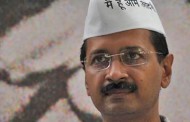
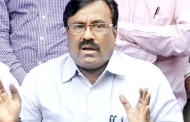

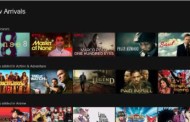

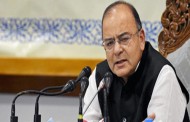
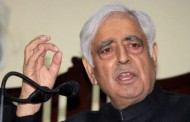

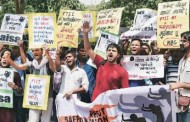





Recent Comments